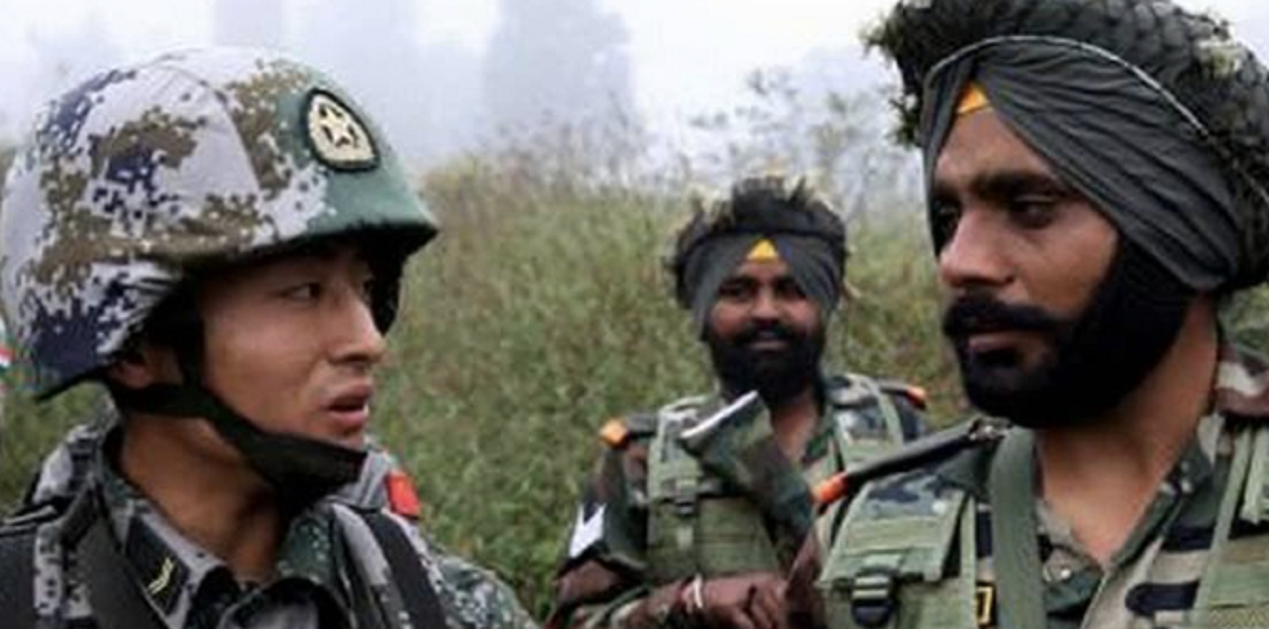The Incursions
The Galwan valley intrusion by China since early May is indicative of China’s strategic signaling to India, and cannot be seen as just one of the near 350 transgressions that occur every year. Reportedly, the PLA has built up men and machinery to dominate the area and construct a road along the Galwan River Valley. Early indicators seem clear, PLA is preparing for a long haul, a likely repeat of Doklam. The simultaneous transgressions and standoff at the North Bank of Pangong Tso in Eastern Ladakh and possibly a first-ever at Nakula in North Sikkim, leading to pushing and jostling resulted in avoidable injuries to soldiers on both sides. Transgressions are a normal occurrence, but what is different this time is the simultaneity, intensity, scope, and the nature of activity.
Incremental transgressions can be attributed to better surveillance, access, and infrastructure on both sides however; these transgressions are mostly for short durations and resolved at the tactical level by local commanders based on established and existing mechanisms. Hence the ongoing incursions are a cause of some concern.1 Equally or more importantly again in a first, the PLA transgression in Eastern Ladakh was possibly supported by Helicopter operations, countered by scrambling of Sukhoi 30s, a frontline fighter of Indian Air Force. This was a certain demonstration of India’s politico-military resolve to stand firm against any undue provocation.
The previous long standoff between the two Asian giants was at Doklam in Western Bhutan in 2017. The 73 days long unprecedented standoff was finally resolved when PM Modi and President Xi Jinping met at an informal summit at Wuhan and agreed to issue strategic guidance to their respective border guarding forces, to ensure peace and tranquility along the 3488 km contested borders. Post the Wuhan summit and strategic guidance, there were reportedly no standoffs of any concern at the LAC. The Wuhan informal summit was followed up by an equally successful second informal summit between the two leaders at the coastal town of Mamallapuram in October 2019.
So what has changed? The Pandemic? The key question is, as to why is PLA indulging in these intrusions, and why now, when the world’s focus is on combating the COVID-19, generally known as made in China Coronavirus. The pandemic has caused unprecedented fatalities and disruption impacting the very thought and behaviour patterns of society, people, nations, and the world.
The Line of Actual Control (LAC)
Before analysing the possible intent and strategic signaling by China in resorting to the ongoing Incursions, it is important to get a perspective of the Line of Actual Control and its dynamics. India and China share a 3488 km long-contested border, though as per China the disputed border is only 2000 km. China also lays claim to a little over 110,000 Sq km of Indian territory. The Sino-Indian border is a peculiar set of contradictions, being the longest disputed border in the world as also the most peaceful disputed border, with the last shot in anger fired in October 19752. A fragile peace exists ever since, with the contested borders being the ever-present potential driver for conflict between the two nuclear-armed neighbours - home to one-third of humanity. As the borders are disputed, there is a constant and continuous effort by the border guarding forces of China and India to lay claims to their perceived territories. To compound the confusion, there is no common understanding of the LAC, as both India and China have their own perceptions of the LAC. There are a number of pockets that are more sensitive and hence both the Indian Army and the PLA patrol these areas to dominate and reinforce their respective claims. On account of differing perceptions of the LAC, transgressions/intrusions by PLA in Indian territory is a common occurrence.
These intrusions often lead to a “face-off” between the Indian Army and the PLA. The “face-offs” generally last a few hours and are resolved at the level of Local Commanders as per established mechanisms. However, some face-offs like Doklam 2017, Chumar September 2014, and Depsang Plains Apr/May 2013 have carried on for a much longer duration and intensity. These were finally resolved by negotiations at various levels, including diplomatic and political. These “Face-offs” are a potential flashpoint and can lead to a skirmish and spiral into a conflict, and thus need to be managed and resolved with due care by both Armies. The way they have managed the relationship ever since the war of 1962 is a remarkable achievement, despite the many sensitive border standoffs. This speaks of the salience of the Confidence Building Measures (CBMs). The prevailing equilibrium along the LAC is enshrined in the five principles of ‘Panchsheel’ and Five Treaties between India and China which detail the CBMs and military engagements ensuring a fragile Peace and Tranquility.3
COVID-19
COVID-19 has directly impacted the emerging world order, which is likely to witness a shift of power from the West to the East. The global architecture will witness major shifts as the US and the West battle the pandemic not so successfully and China losing its leverages as it is believed to have caused the pandemic. India on the other hand has done well in not only combating the Corona internally but also is assisting nations in the region and beyond, including the USA, in a much-needed outreach enhancing her goodwill and linkages. The post Covid-19 world order is an opportunity for India to position as a global leader, asserting her just and rightful place. India will be the ‘Balancing Power”, and hence China needs to factor in this aspect, as China will need Indian support.
China’s Military Coercion - Likely Causes
What are the plausible causes of the recent spate of standoffs along the LAC? China is adept at military coercion and has successfully practiced it in the past along the LAC with India as also in the South China Sea and earlier with Vietnam. In early May there has been an increase in activity in the South China Sea both by China followed by the US Navy. Apparently China is back to its old, tried and tested ways of military coercion. The likely causes could be many. There is a definite linkage of China’s military coercion to the pandemic and the emerging world order post COVID-19. China is under stress as the world perceives China to be the cause of the pandemic. The statement by PM Modi during the G20 video conference was statesmanlike and avoided blaming China for the pandemic. However, of late many in India have voiced their concerns against China for the pandemic echoing the many voices, the world over. 4 China cannot afford India with its growing power and voice in the world bodies, raising issues against China, and hence the military pressure as part of strategic signaling. China realises that they will need India on its side as it stands isolated, the methodology applied is negative, and will backfire.
Another cause for the increased incursions could be the frequent calls by Indians to integrate POK and Gilgit- Baltistan as these territories rightfully belong to India. The Belt and Road Initiative is part of the ‘China Dream’, and CPEC which passes through POK connecting Gawadar is central to the BRI. China with huge investments will safeguard its interests, and hence the military coercion and strategic signaling. This of course has more to do with China’s direct interests and investments in the CPEC rather than help Pakistan, which is incidental and congruent.5 China is also concerned with the economic fallouts of the pandemic, with a number of companies moving out to other attractive nations. As India too vies to incentivise and attract these companies, China may be creating an uncertain security situation to indirectly deter these companies to shift operations to India, which is emerging as one of the preferred options.
What Next?
At the operational and tactical level, China will continue to exert pressure to change the status quo, carry on with the road-building activity as this road if constructed will give access to Karakoram pass through the Galwan valley. At the strategic domain, the present standoff may continue longer as part of China’s ‘Three Warfare’ philosophy and the ongoing perceived military coercion. China is not likely to risk any escalation of the present situation; continued peace and tranquility is as much in China’s interests as in India’s. However, India should be prepared to mitigate certain threats emanating from China’s non-contact warfare strategy, possibly in the Cyber domain. China will do well to realise and recognise that it now faces a new India, a responsible, risen, and resurgent India, a global leader with a say in many multilateral forums and world bodies.
India’ Response Options
China respects strength, India will do well to follow the concept of “ NO BLINKING, NO BRINKMANSHIP’, standing firm at the ground and exploiting the established mechanisms of Flag meetings at the local level, activating the Working Mechanism for Cooperation and Coordination( WMCC) at the diplomatic level, keeping all channels open to ensure a ‘Status Quo Ante’. The diplomatic- political dialogue must continue. The troops on the ground need to stand firm as per the rules of engagement. Indian military should ensure an equitable and proportional build upon its location in the areas of incursions.
As Military Coercion is part of China’s strategy, whether along the LAC or the South China Sea, as also as China respects strength, India will do well to revive the stillborn Mountain Strike Corps. The budget constraints are well understood but to ensure equitable, proportional, and speedy build up along the various contested areas with China India will need the matching capability, operational flexibility, and credible continental deterrence. Political and diplomatic parleys have to be supported by military strength on the ground. The PLA over the years has focussed on the "THREE Rs" RADARS, ROADS, and RESERVES. This has given the PLA the capability to dominate their perception of the LAC effectively and intervene with our patrolling activity with ease and impunity. This of course is a study in itself. It is imperative that we build requisite Infrastructure and capabilities, enhance capacities, and review and refine our structures to ensure ‘Peace and Tranquility’ along the LAC on equal terms.
While capability building is an ongoing process and the much-needed impetus has been given by the present government to infrastructure development, including the recent reforms announced recently, there is an urgent dictate of the times to resolve the flawed command and control structure along the Northern borders. The ITBP operates independently of Army, under the MHA. There is a dual responsibility of Army and ITBP, often working in conflict with cooperation and coordination left to the commanders on the ground. The ITBP needs to be placed under command and control of the Army, in keeping with the successful model along the LC where the BSF operates under the operational control of the army.
In a post COVID emerging world order China will need India more than India needs China. China has to realise that military coercion will not work against a risen, responsible resurgent India capable of safeguarding her national interests and assets. India will need to stand firm and face the challenge without blinking or brinkmanship.
References
- Post Wuhan - Is China back to military coercion? , The Financial Express
https://www.msn.com/en-in/news/world/post-wuhan-is-china-back-to-military-coercion/ar-BB14ptk5 - Post Wuhan Imperative to Ensure Peace and Tranquility along the Line of Actual Control by Lt Gen Vinod Bhatia, CENJOWS https://cenjows.gov.in/upload_images/Synodos/pdf
- All Quiet on the LAC , General Vinod Bhatia https://www.generalvinodbhatia.com/all_quiet_on_lac.php
- Post Wuhan - Is China back to military coercion?
https://www.msn.com/en-in/news/world/post-wuhan-is-china-back-to-military-coercion/ar-BB14ptk5 - Ibid.
Image Source: https://thekashmirpress.com/2020/05/17/india-reinforce-troops-after-chinese-pitch-tents-in-ladakh/amp/











Post new comment